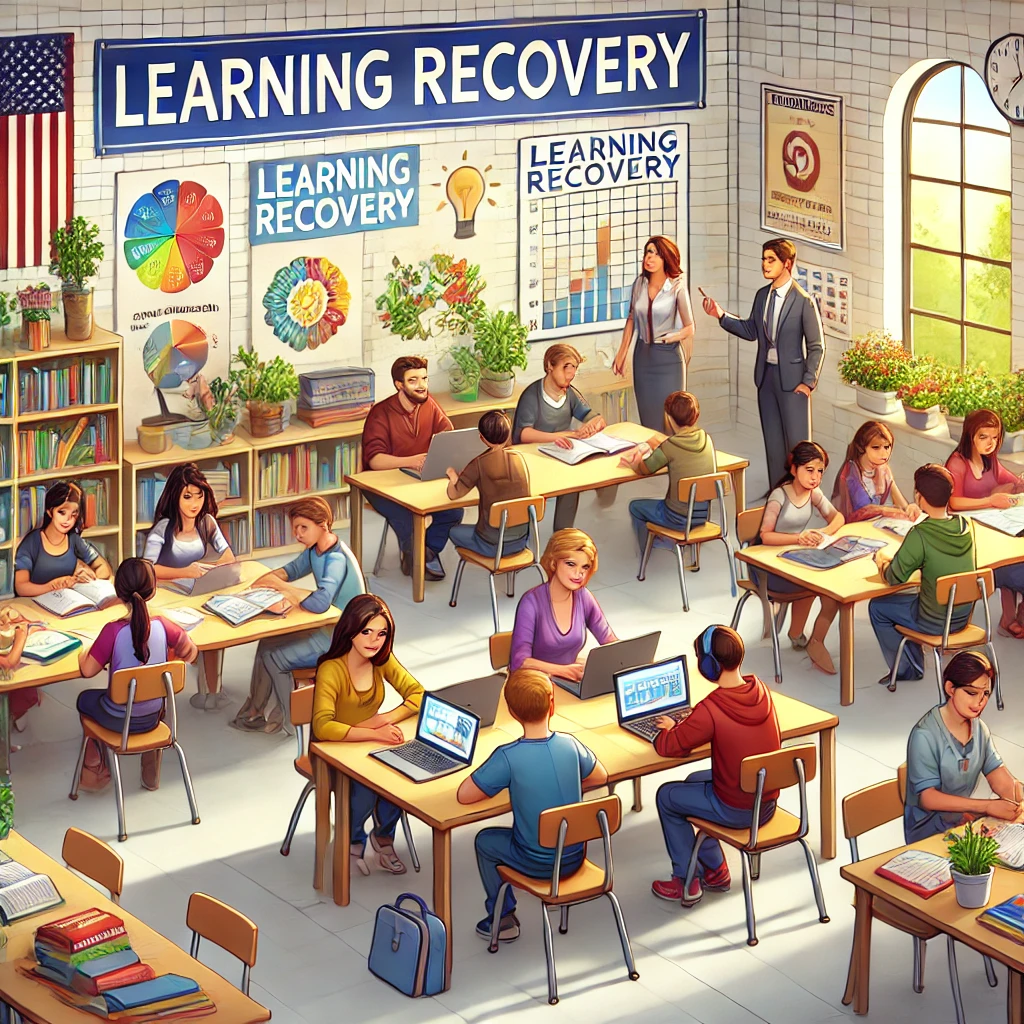The Urgent Need for K-12 Schools to Focus on Learning Recovery Post-Pandemic
- vslee3
- Aug 30, 2024
- 3 min read
Updated: Sep 29, 2024
The COVID-19 pandemic brought unprecedented challenges to education systems worldwide, leading to a significant disruption in learning. As schools rapidly transitioned to online and hybrid models, students faced a range of obstacles—from limited access to technology to the absence of in-person interaction with teachers and peers. Now, as the world slowly returns to normalcy, the focus must shift to one of the most pressing issues in education: learning recovery.
The Extent of Learning Loss
Research and assessments conducted during and after the pandemic have revealed alarming levels of learning loss across various grade levels, particularly in key subjects like mathematics and reading. For many students, the abrupt shift to remote learning resulted in months of missed or inadequate instruction. Vulnerable populations, including low-income students, students with disabilities, and English language learners, were disproportionately affected, exacerbating existing educational inequities.
A study by the National Center for Education Statistics (NCES) highlighted that students in grades K-3 were, on average, three to five months behind in reading and five to six months behind in mathematics by the end of the 2020-2021 school year. This learning gap not only hinders academic progress but also poses long-term risks to students' educational and professional futures.
Why Learning Recovery Matters
1. Closing Achievement Gaps: The learning loss experienced during the pandemic threatens to widen the achievement gap between advantaged and disadvantaged students. Schools must prioritize learning recovery to ensure that all students have the opportunity to succeed, regardless of their socioeconomic background.
2. Building a Strong Foundation: Early education is critical for developing fundamental skills in reading, writing, and arithmetic. Without targeted interventions, students who fell behind during the pandemic may struggle to catch up, leading to difficulties in higher grades and reducing their likelihood of graduating on time.
3. Mental Health and Well-being: Prolonged educational disruptions have also taken a toll on students' mental health. Anxiety, stress, and a sense of falling behind can further hinder academic performance. Effective learning recovery strategies must address both academic and emotional needs, providing students with the support they need to regain their confidence and motivation.
Strategies for Effective Learning Recovery
1. Targeted Tutoring: One-on-one or small group tutoring has proven to be one of the most effective ways to address learning gaps. By providing personalized instruction, tutors can help students focus on specific areas where they are struggling, allowing for more rapid progress.
2. Extended Learning Time: Schools can offer additional learning opportunities through after-school programs, summer schools, or extended school years. These programs can provide the extra time needed to cover lost ground and reinforce key concepts.
3. Data-Driven Instruction: Utilizing assessment data to identify learning gaps and tailor instruction to meet students' individual needs is crucial. By regularly assessing students' progress, educators can adjust their teaching strategies and provide targeted interventions.
4. Social and Emotional Learning (SEL): ntegrating SEL into the curriculum helps students develop resilience, manage stress, and build healthy relationships. A focus on SEL can create a supportive learning environment that fosters both academic and personal growth.
5. Family and Community Engagement: Engaging families and communities in the learning recovery process is essential. Schools can partner with parents, local organizations, and businesses to provide additional resources, support, and learning opportunities outside of the classroom.
Conclusion
The path to learning recovery is not a short one, but it is a necessary journey to ensure that all students have the opportunity to reach their full potential. K-12 schools must prioritize learning recovery initiatives to address the academic and emotional impacts of the pandemic. By implementing targeted strategies and fostering a supportive learning environment, schools can help students overcome the setbacks of the past few years and pave the way for a brighter, more equitable future in education.
The time to act is now. The future of an entire generation depends on it.
.png)

Comments